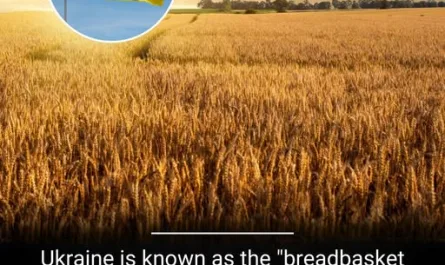Scattered across the lush landscapes of Galicia, Spain, and to a lesser extent in other parts of Spain, France, the British Isles, and Scandinavia, the hórreo stands as a testament to centuries-old ingenuity in agricultural storage. These distinctive granaries, designed to safeguard cereals from rodents and moisture, are both functional and iconic, blending practicality with cultural heritage. Built of stone or wood and elevated on pillars, hórreos are a striking feature of rural life, with roots tracing back to at least the 13th century.
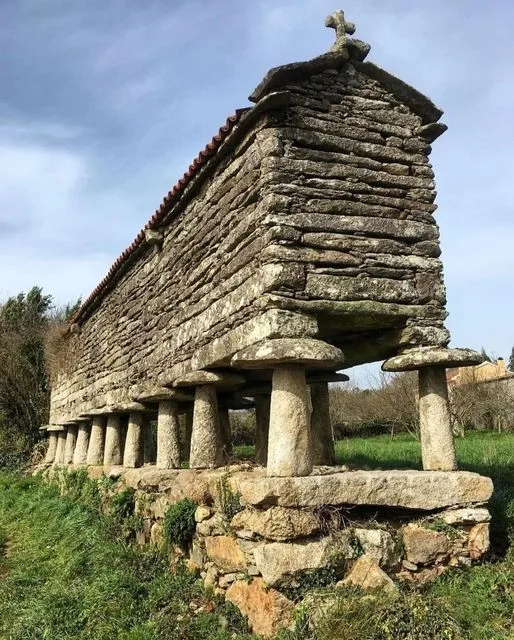
A Design Born of Necessity
The hórreo’s defining feature is its elevation, typically raised on stone or wooden pillars capped with flat stones called muelas or pegollos in Galicia. These act as barriers, preventing rodents from climbing into the storage chamber. The structure, often rectangular or square, is compact yet efficient, with walls featuring narrow ventilation slots to ensure airflow and keep grain dry. This clever design protects cereals like corn, wheat, or rye from spoilage and pests, critical in the damp, temperate climates of Galicia and northern Europe.
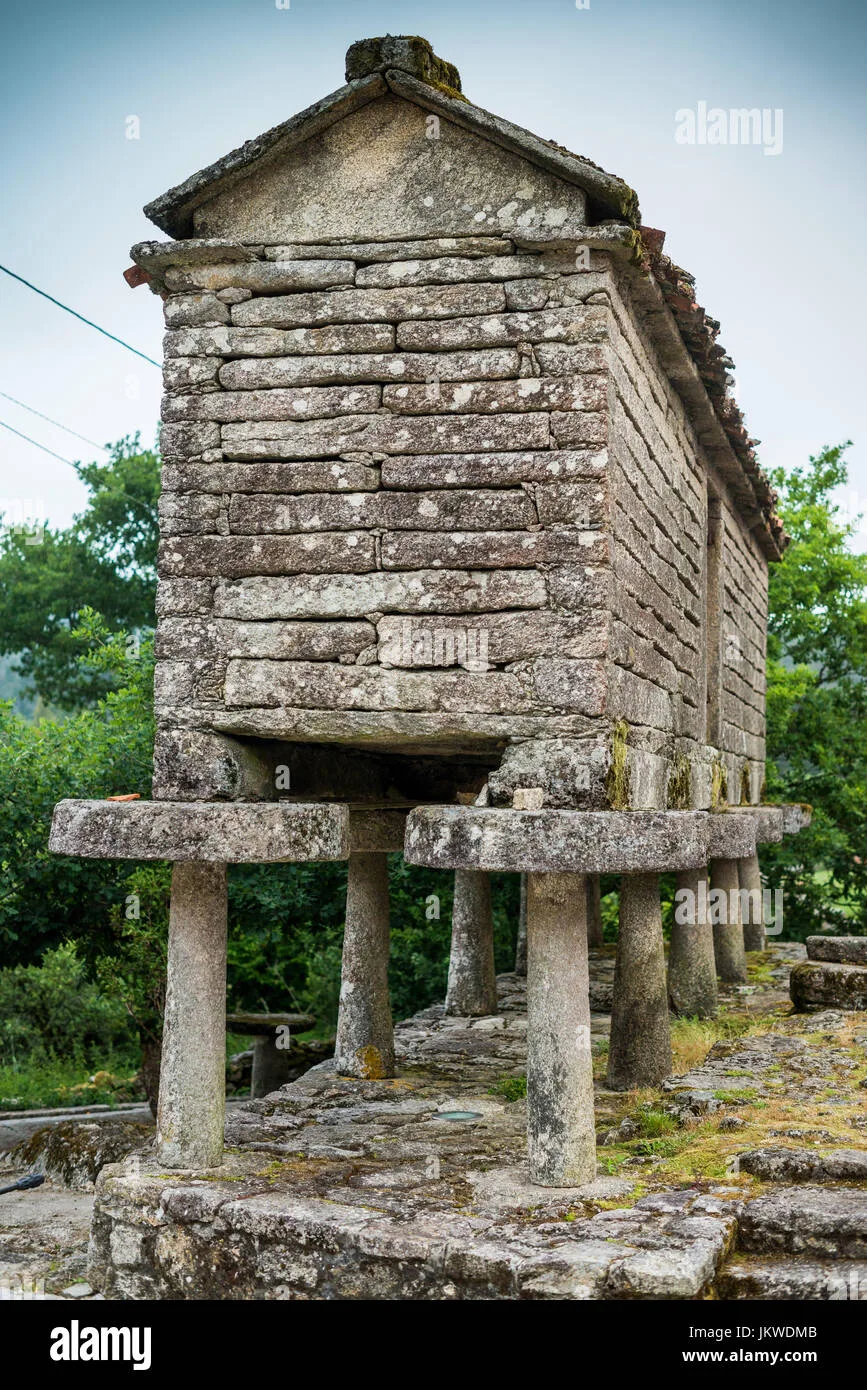
Most Galician hórreos are made of granite, abundant in the region, though wooden versions are common in areas like Asturias or Scandinavia. Sizes vary, from small family granaries to larger communal ones, often adorned with simple carvings or crosses, reflecting their cultural significance. The oldest surviving hórreo, found in Carnota, Galicia, dates to the 15th century, though written records from the 13th century describe similar structures, suggesting an even older tradition.
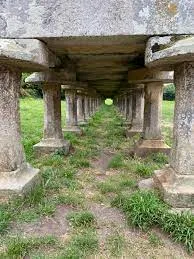
A Cultural and Historical Icon
Hórreos are deeply woven into Galician identity, symbolizing self-sufficiency and rural life. In medieval times, they were often built near homes or monasteries, storing harvests that sustained communities through harsh winters. Their prevalence in Galicia—estimated at over 30,000—far exceeds other regions, though similar granaries, like the espigueiros in Portugal or staddle barns in the British Isles, share the same elevated design. In Scandinavia, structures like the härbre served analogous purposes, adapted to local materials and climates.
Beyond functionality, hórreos carry spiritual weight. Many in Galicia feature crosses or religious symbols, reflecting their historical ties to the church, which often owned or taxed stored grain. Some are still used today, though modern farming has reduced their practical role, turning them into cherished heritage sites or decorative garden features.
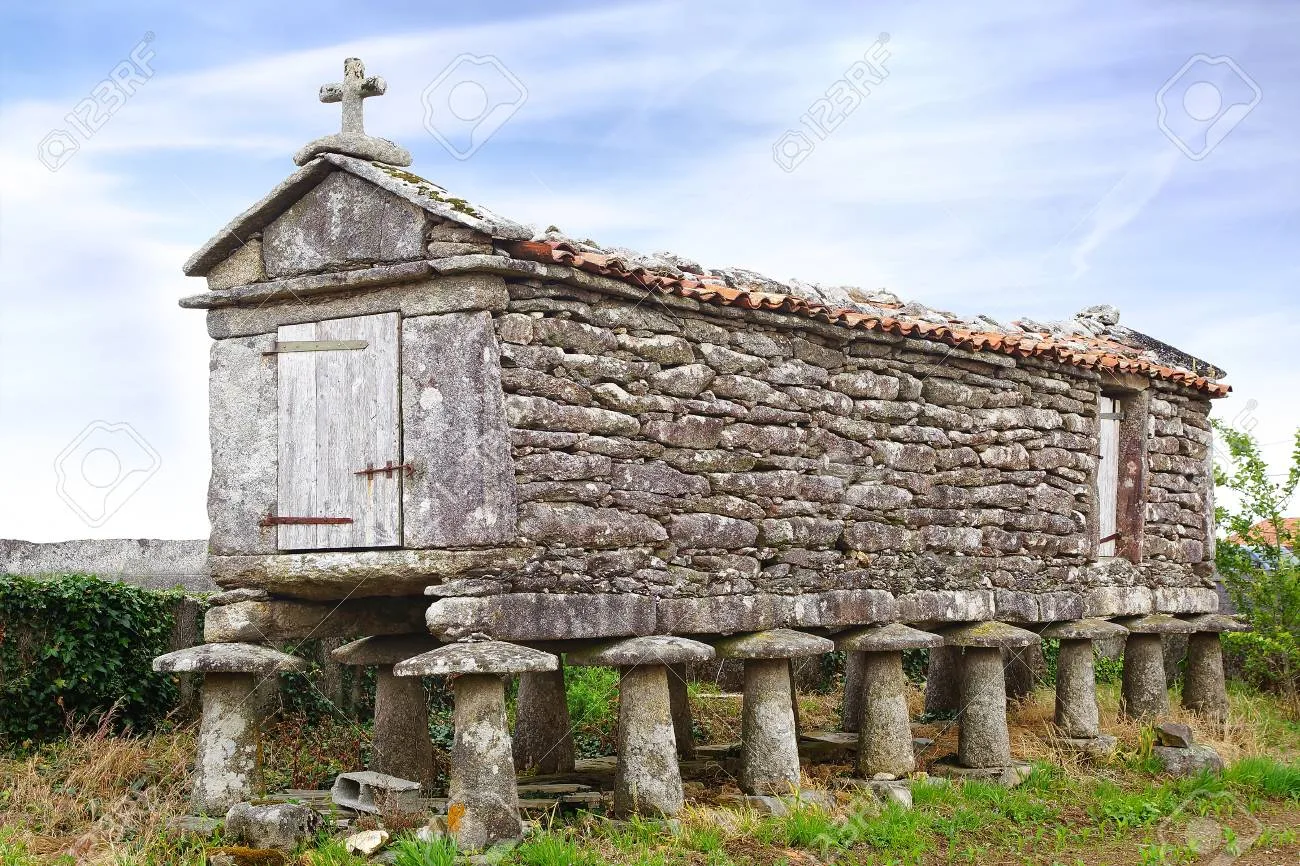
A Legacy Preserved
The hórreo’s enduring presence, from the 15th-century Carnota granary to modern replicas, speaks to its timeless design. As a symbol of resilience and ingenuity, it connects rural communities to their past while captivating visitors with its rustic charm. In Galicia, where these structures dot the countryside like stone sentinels, the hórreo remains a proud emblem of survival, safeguarding grain and history alike against the ravages of time.


